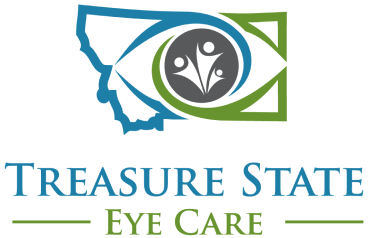Macular Degeneration Evaluations
Although there is currently no cure for age-related macular degeneration (AMD), there are treatment options available to slow the disease’s progression and stop it from leading to blindness. Read on to learn more about AMD and how we can help with our macular degeneration evaluation.
What is age-related macular degeneration?
AMD is a common and irreversible eye condition that affects your central vision. The macula at the back of your eye is responsible for central vision and is therefore crucial for good eyesight and seeing intricate details and colors. For example, it’s thanks to good central vision that we can recognize faces, watch TV, drive a car, and read.
The retina at the back of the eye is made up of nerves that record images and send them to the brain through the optic nerve. When AMD occurs and the macula deteriorates, the retina sends blurred or distorted images to the brain, which has a negative impact on the individual’s vision and quality of life.
Types of AMD
There are two types of macular degeneration: wet and dry. Dry AMD occurs when your macula gradually thins over several years and tiny clumps of protein called drusen grow.
Wet AMD develops quickly and is extremely serious as it can cause sudden vision loss. It occurs when abnormal blood vessels grow under the retina and leak blood and fluids into the macular, causing scarring.
Between 85% to 90% of people with AMD have the dry form.
Symptoms of age-related macular degeneration
In the early stages of AMD, symptoms are usually not noticeable. As signs gradually reveal themselves, irreversible damage may have already occurred. This highlights the importance of getting regular comprehensive eye exams as early detection can ensure the most effective treatment to preserve your vision and slow down disease progression.
Here are some common symptoms of AMD:
- Blurred or distorted vision
- Straight lines appearing crooked or wavy
- Blind or dark spots in your central vision
- Colors appearing less bright
What causes age-related macular degeneration?
While the exact cause of AMD is unknown, it’s been linked to factors such as smoking, high blood pressure, being overweight, being over the age of 50, and having a family history of AMD.
Evaluations for AMD
There are treatment options available to protect your vision and prevent it from further deterioration. All our eye doctors are residency trained in disease management and the care of all major chronic eye conditions, including AMD.
We have invested in a state-of-the-art piece of equipment called the AdaptDx (Pro) to carry out our macular degeneration evaluations. This has revolutionized the way we assess patients and monitor them. It’s simple, comfortable, and non-invasive.
Backed by over 20 years of clinical research, it allows our eye doctors to measure how long it takes your vision to adjust to the darkness, known as your dark adaptation speed, by using precision eye tracking technology to align your eyes.
The whole process takes about 10 minutes and you’ll be guided by Theia™, the AdaptDx (Pro)’s friendly AI technician throughout. All you’ll have to do is wear a lightweight headset, and every time you see a flashing light, you’ll press a button. Once the test is complete, your doctor will review the results with you. If AMD is detected, they will talk you through your diagnosis and treatment options.
What makes this test so unique is the fact that it can detect the presence of AMD earlier than other tests before the condition has caused any damage. This means your test results can provide our eye doctors with critical information that allows them to recommend early treatment and AMD management for improved outcomes.
Contact us to find out more or book your macular degeneration evaluation in today.



